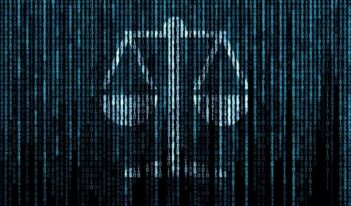
Scholars discuss policy approaches to regulating dark patterns.
The Federal Trade Commission (FTC) secured a historic $2.5 billion settlement against Amazon in September 2025, including the largest ever civil penalty in a case involving an FTC rule violation. In its lawsuit, the FTC alleged that the e-commerce giant used deceptive methods to sign up consumers for Amazon Prime subscriptions while making it exceedingly difficult to cancel. In addition to the settlement, the court ordered the corporation to make meaningful changes to its enrollment and cancellation interfaces.
U.S. consumer subscription spending is surging—rising from an annual average of $237 in 2018 to $273 in 2021. Retailers continue to adopt subscription-based models, which are favored by businesses for the steady revenue streams they produce. In certain markets, such as streaming, customers may benefit from the “buffet” of options made available through subscriptions. But this convenience is not without cost—thanks to deceptive design by online retailers, many consumers unknowingly continue to pay for unused subscriptions.
Hard-to-escape subscription traps are just one form of dark pattern—a manipulative online tactic designed to trick consumers into making purchases or surrendering their data. Other dark patterns include links inducing website users to unknowingly accept all cookies and the inconspicuous placement of options to reject default add-ons to purchases. Policymakers have taken notice, and the FTC Bureau of Consumer Protection has brought several high-profile lawsuits in recent years against companies it sees as the most egregious users of dark patterns.
Among such lawsuits is FTC v. Care.com, Inc., which culminated in the summer of 2025 with a $8 million settlement. In this case, Care.com, a child and older adult care gig platform, agreed to pay a refund to the site’s users after the Bureau alleged that the platform had “systematically deceived caregivers who were looking for jobs while failing to give families seeking care a simple way to cancel their paid memberships”. In the complaint, the Bureau used the term “dark pattern” to describe Care’s difficult to navigate cancellation page.
The Bureau, which generally targets unfair, deceptive, and fraudulent business practices in enforcement actions, has also issued rules aimed at curbing dark patterns. One such rule was the so-called “Click to Cancel” rule, which required sellers make it as easy for consumers to cancel their enrollment in subscriptions as it was to sign up. A federal appellate court, however, struck down the “Click to Cancel” rule in 2025, holding that the FTC failed to weigh the costs and benefits before issuing the rule. The ongoing debate over how to regulate dark patterns raises a fundamental and longstanding question: To what extent are policymakers are willing to intervene in the U.S. economy in the name of protecting consumers?
In this week’s Saturday Seminar, scholars discuss policy approaches to regulating dark patterns.
- Dark patterns, as Gregory Dickinson of the University of Nebraska College of Law explains in an article in the Georgia Law Review, are manipulative interface designs that steer consumers toward harmful choices, like oversharing data, starting subscriptions, or buying higher-priced items. Dickinson argues that dark patterns are pervasive because of their many forms, rapid evolution, and the difficulty of distinguishing legitimate persuasive designs from coercive designs. Although the FTC polices deceptive practices, Dickinson advocates private enforcement. Contract and tort law, Dickinson contends, are flexible enough to address individualized harms and changing technologies. Dickinson acknowledges that minimal or noneconomic harms may dampen enforcement numbers, but proposes that lawmakers could spur private action by providing for attorneys’ fees or statutory damages.
- Amelia Fletcher of the University of East Anglia and several coauthors caution that online subscription contracts and auto-renewal mechanisms can harm consumers by exploiting behavioral biases in an article in the Yale Journal on Regulation. The Fletcher team explains that firms rely on “set-and-forget” defaults and burdensome cancellation procedures, knowing many consumers will underestimate future costs or fail to act in time. Fletcher and her coauthors note that this strategy allows companies to profit without improving quality or lowering prices. In response, the Fletcher team recommends banning opt-out auto-renewals and requiring consumers to consent to reenrollment. The Fletcher team calls for clear disclosure of renewal pricing and rules ensuring consumers can cancel subscriptions as easily as they signed up.
- In an article in William & Mary Business Law Review, Carter McCants of William & Mary Law School evaluates the harm posed by dark patterns in online subscriptions. McCants identifies common dark patterns, such as hidden or confusing cancellation pages and so-called “click to subscribe, call to cancel” tactics. McCants argues that these barriers to cancellation cause market inefficiencies because consumers continue paying for services they no longer want, and because companies relying on automated subscription models do not effectively respond to consumer needs. McCants supports the FTC’s 2021 Policy Statement, which mandates that businesses offer cancellation methods that are as easy to complete as the initial subscription and encourages states to enact legislation to make cancellation easier.
- Dark patterns are “dark” because they are a form of wrongful self-dealing, argues Johanna Gunawan of the Maastricht University School of Law and several coauthors in an article in the Indiana Law Journal. The Gunawan team contends that existing legal understandings of dark patterns lack a clear moral basis, focus too much on the individual while ignoring societal harms, and struggle to articulate workable legal thresholds. Gunawan and her coauthors advocate a conceptual framing of dark patterns that combine the study of human behavior with the law’s need for clarity, flexibility, and compatibility with existing legal frameworks. Gunawan and her coauthors propose drawing from established legal frameworks prohibiting wrongful self-dealing to clarify and standardize the law of dark patterns.
- The regulation of dark patterns should involve the study of human behavior, argue Katri Nousiainen of Yale Law School and Catalina Perdomo Ortega of Harvard Law School in an article in the Loyola Consumer Law Review. Policymakers and U.S. courts mostly rely on existing legal doctrine , which rarely mentions dark patterns, explain Nousiainen and Perdomo Ortega. They contend that dark patterns distort markets because they induce market actors to act against their preferences, spending money on things they do not really want. Nousiainen and Perdomo advocate an approach to dark patterns that is user-centric, comprehensible, and transparent, incorporating rules, sanctions, and compensation for harmed consumers.
- Matthew Kugler of the Northwestern Pritzker School of Law and several coauthors explore how regulators can address privacy dark patterns in an article in the University of New Hampshire Law Review. The Kugler team explains that lawmakers and agencies are increasingly scrutinizing online design features that manipulate consumers into unwanted purchases or sharing personal data. Kugler and his coauthors point to recent European Union guidance under the General Data Protection Regulation and U.S. proposals to curb auto-renewal defaults, require simple cancellation processes, and mandate clearer disclosures of renewal pricing. The Kugler team contends that grounding emerging regulation in behavioral research is essential to prevent firms from exploiting consumer inattention and to ensure fairer digital marketplaces.
The Saturday Seminar is a weekly feature that aims to put into written form the kind of content that would be conveyed in a live seminar involving regulatory experts. Each week, The Regulatory Review publishes a brief overview of a selected regulatory topic and then distills recent research and scholarly writing on that topic.



